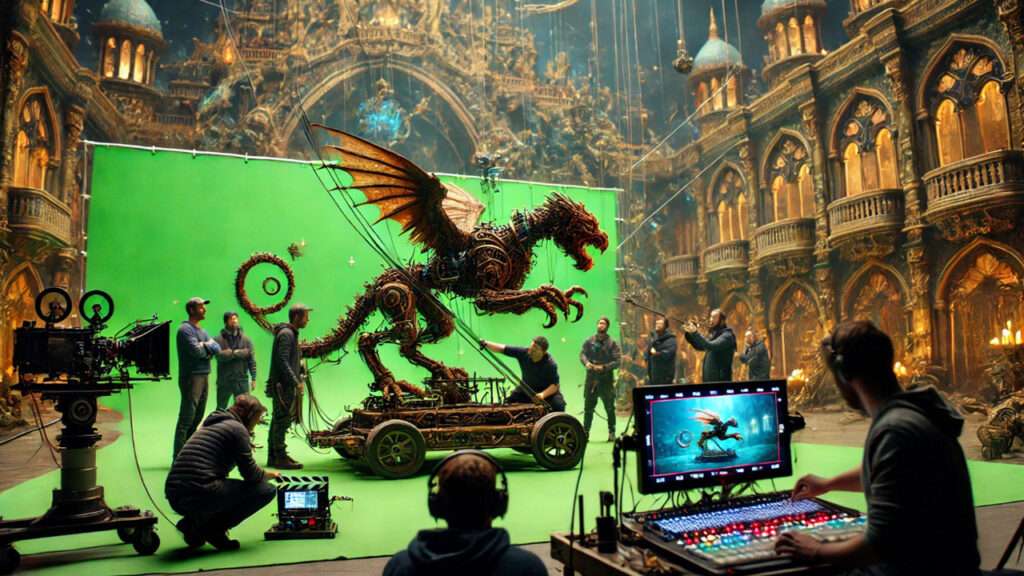
The Challenges of Filming Harry Potter: Behind-the-Scenes Secrets and Overcoming Production Hurdles
Ever wondered what it really took to bring the magical world of Harry Potter to life on screen? 🎬 From flying broomsticks to epic battle sequences, the challenges of filming Harry Potter were as complex as the wizarding world itself. Behind every spell and enchanted creature, there were real hurdles that required creative problem-solving and cutting-edge technology. In this article, we’ll dive deep into the challenges of filming Harry Potter, uncovering behind-the-scenes secrets that most fans don’t know. Whether you’re a movie buff or just curious about the magic behind the movies, keep reading to discover how filmmakers overcame production obstacles to create one of the most beloved franchises of all time! ✨
Table of Contents
Toggle1: The Complex World of Harry Potter Filming
Filming the Harry Potter series wasn’t just about magical wands and flying broomsticks—it involved a complex blend of creativity, technology, and meticulous planning. 🎥 The films’ massive success relied on overcoming unique challenges that required a combination of practical effects, cutting-edge CGI, and visionary direction. Let’s break down the core elements that made bringing J.K. Rowling’s wizarding world to life both a dream and a challenge.
Creating a Believable Magical World ✨
One of the biggest challenges filmmakers faced was making the magical world of Harry Potter feel real. With creatures, spells, and enchanted objects around every corner, the challenge was to craft an immersive universe that audiences could believe in.
- Practical Effects: Rather than relying solely on CGI, the production team often used physical models and prosthetics. For example, Buckbeak, the Hippogriff, was a mechanical model controlled by puppeteers, giving it a tactile realism that computer-generated creatures sometimes lack.
- Set Design: The magical locations, like Hogwarts Castle and Diagon Alley, needed to look lived-in and magical. The art department constructed detailed, large-scale sets, sometimes using real-world locations like Scotland’s Alnwick Castle to add authenticity.
The Role of Technology and Special Effects 🖥️
While practical effects added authenticity, the Harry Potter films pushed the boundaries of technology in the film industry, blending CGI with traditional filmmaking techniques.
- Seamless Integration of CGI: Flying broomstick scenes, like Harry’s Quidditch match in The Philosopher’s Stone, were made possible through advanced CGI and green screens. The flying sequences used wire rigs, while CGI was employed to seamlessly add movement and background.
- Innovative Visual Effects: The spell effects, such as the iconic “Expelliarmus” or “Expecto Patronum,” were created through a mixture of practical pyrotechnics and digital enhancements, giving each spell its own personality while maintaining the feeling of magic.
Balancing the Old with the New ⚙️
The real challenge lay in balancing the old-fashioned, traditional elements of filmmaking with new technologies. The team had to respect the legacy of filmmaking while pushing the limits of what was possible with modern tech.
- Physical Sets vs. Digital Magic: The team often shot in real locations and built intricate physical sets—such as the Great Hall at Hogwarts—then enhanced these shots with CGI to add magical elements, creating a blend of the real and the fantastical.
- Using Traditional Filmmaking Methods: For scenes like the Yule Ball or the Triwizard Tournament, the production utilized practical lighting and props, combined with digital effects to make everything feel more tangible and grounded.
Why This Matters
Understanding the complexity of filming Harry Potter helps us appreciate the sheer effort that went into making these films so immersive. The balance between practical effects and advanced technology not only created a world that felt real but also made the magical universe something audiences could feel. And that’s what truly made the series magical. ✨
2: Top Challenges in Filming Harry Potter
Filming the Harry Potter series was no easy task. The films weren’t just about magical creatures and epic spells; they were a complex blend of technology, creativity, and overcoming real-world obstacles. Here, we’ll explore the top challenges faced by the filmmakers and how they turned those hurdles into groundbreaking moments on screen. 🎬
Challenge #1: Creating a Believable Magical World ✨
The biggest challenge in filming Harry Potter was making magic feel real. Audiences needed to believe in the world of Hogwarts, Quidditch, and spellcasting. But how do you create a fantasy world that’s both believable and visually stunning?
- Practical vs. Digital: While CGI played a huge role, many key moments, like flying broomsticks or magical creatures, used practical effects. For example, the magical creatures were often created with animatronics, puppets, or elaborate physical models, which were then enhanced with CGI for added realism.
- Real Locations & Set Designs: Many iconic locations, like the Great Hall, were built as physical sets. These details helped ground the story in reality, while CGI added the magic that made the world come alive.
Challenge #2: Special Effects vs. Realism 🖥️
The world of Harry Potter required cutting-edge special effects, but there was a constant challenge in making sure those effects didn’t overwhelm the story. How do you make magic look natural?
- Flying Scenes: The Quidditch matches and broomstick flights were particularly challenging. While CGI was used to enhance the action, wire rigs and green screens helped create the illusion of flight. The team carefully blended practical effects with digital elements to make these scenes feel authentic.
- Magical Creatures: Some of the magical creatures, like the Basilisk and Buckbeak, required a combination of CGI and animatronics to make them appear lifelike. The filmmakers had to ensure these creatures didn’t look too “computer-generated,” as it would break the magic for the audience.
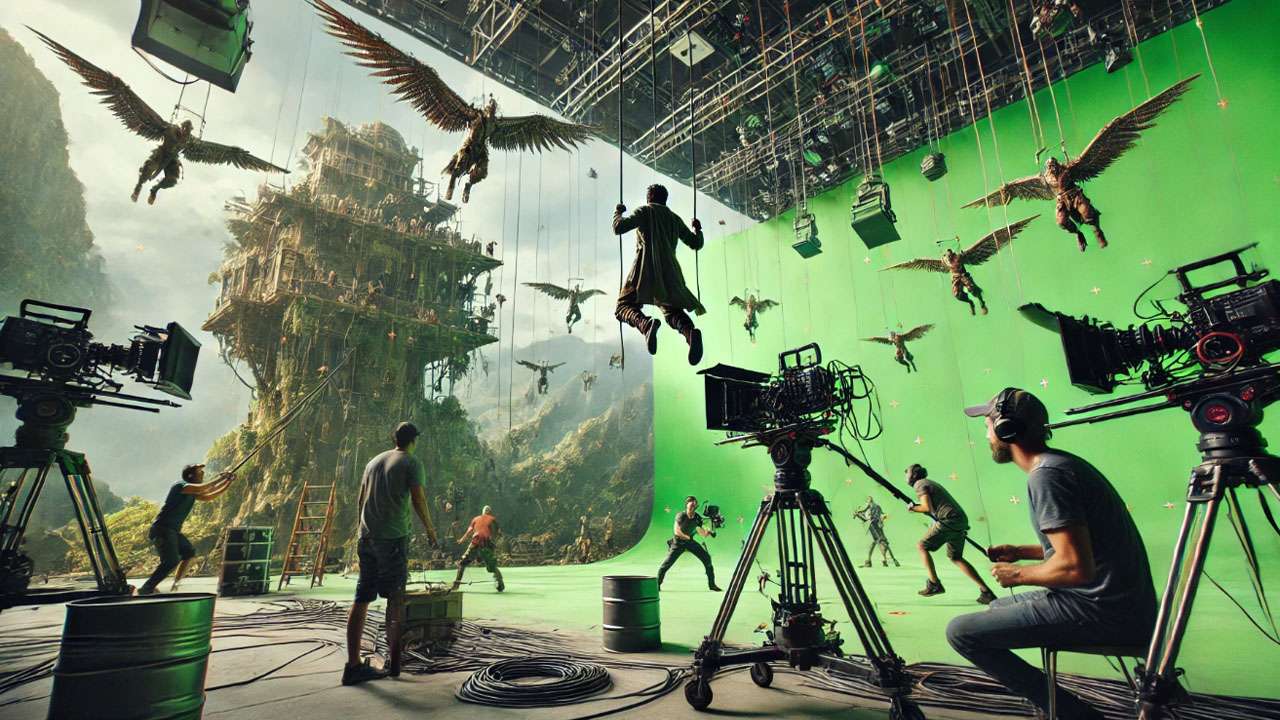
Challenge #3: Staying True to the Books 📚
Adapting a beloved book series into a movie franchise is never easy. For Harry Potter, the task was even harder because of the deep, complex world J.K. Rowling created.
- Condensing the Story: The books were full of detail, and it was a challenge to capture the essence of the plot while keeping the films at a reasonable length. Important subplots had to be condensed or left out entirely, but the filmmakers worked closely with Rowling to ensure the spirit of the books remained intact.
- Character Development: With an ensemble cast, maintaining the depth of each character was a challenge. Yet, the team managed to portray the growth of characters like Harry, Hermione, and Ron over the course of the series, which resonated with both book fans and newcomers alike.
Challenge #4: The Iconic Hogwarts Castle 🏰
The Hogwarts Castle is perhaps the most recognizable set in the series. But constructing it posed some unique hurdles.
- Size and Scale: Building a castle of that size in a studio was no small feat. The production team used a mix of real sets, miniatures, and CGI to create the illusion of a vast, magical world. Many of the exterior shots were created with detailed miniatures, while the interiors were built with enormous attention to detail.
- Consistency Across Films: As the films evolved, the look of Hogwarts had to stay consistent. This meant carefully managing set design and re-creating key locations that became iconic, like the Great Hall and the Forbidden Forest.
Challenge #5: Managing Tight Timelines and Budget Constraints ⏳💰
Filming a series as large as Harry Potter means managing both time and budget—two things that were often in short supply.
- Quick Turnaround: Filming on a tight schedule meant that the team often had to make quick decisions and solve problems on the fly. For example, during certain high-pressure scenes, special effects and set design teams had to collaborate instantly to avoid delays.
- Budgeting for High-Quality Effects: While the films had a hefty budget, every penny had to be spent wisely. Filmmakers had to choose between practical effects and CGI, ensuring that the most important scenes had the highest-quality visual magic.
Why These Challenges Matter
Each of these hurdles contributed to the Harry Potter films’ status as a groundbreaking achievement in cinema. The filmmakers’ ability to seamlessly blend technology, creativity, and storytelling is why these films have endured for generations. Overcoming these challenges didn’t just create magic on-screen—it set new standards for how fantasy films are made. ✨
3: The Challenges of Filming Action and Fantasy Sequences
Filming the action and fantasy sequences in Harry Potter was no easy task. With broomstick races, magical duels, and epic battles, each scene required a delicate balance of choreography, special effects, and creative direction. How do you film an intense Quidditch match or a duel between Harry and Voldemort while making it believable? Let’s dive into the challenges filmmakers faced and the innovative solutions they came up with. ⚡
Flying Broomstick Sequences 🧹
One of the most iconic features of the Harry Potter films is the flying broomsticks, especially in the Quidditch matches. But how do you film scenes that are meant to look like characters are soaring through the air?
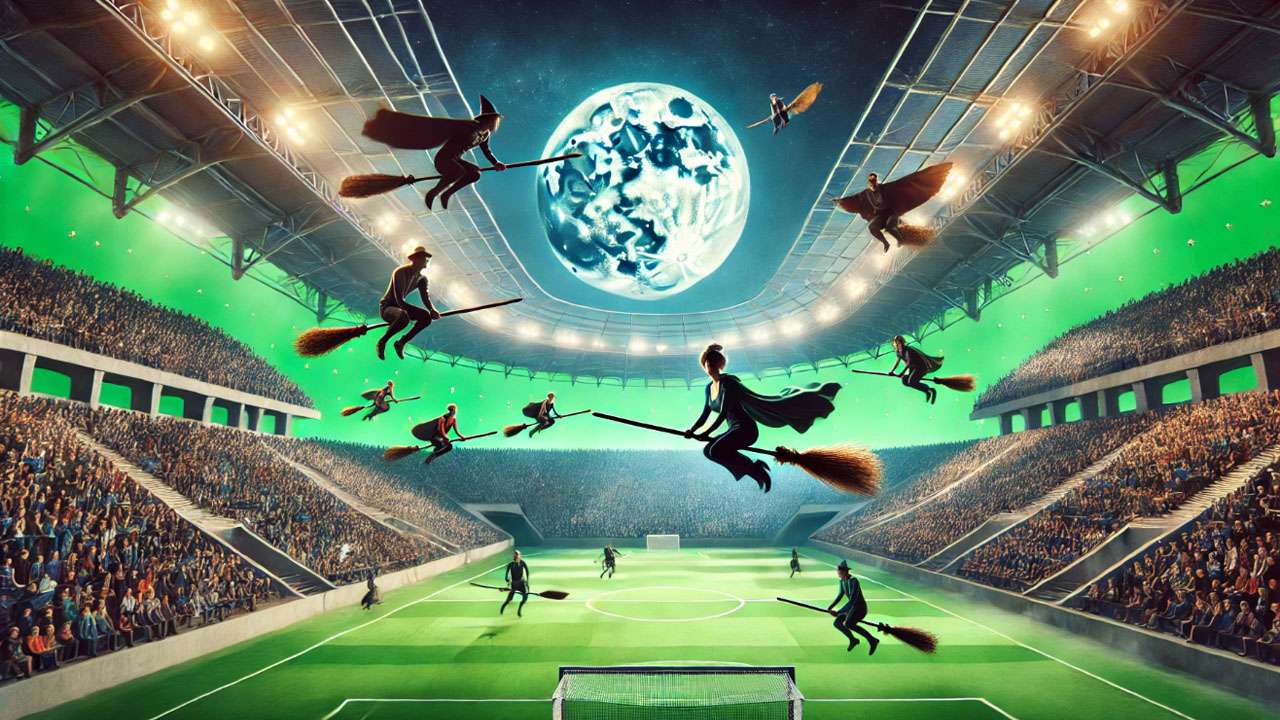
- The Challenge: Creating the illusion of flight required a mix of wire rigs, green screens, and CGI. The actors had to be suspended on wires while performing acrobatic movements to simulate flying.
- The Solution: Filmmakers used green screens to film the background and inserted CGI broomsticks and flying elements in post-production. This helped to ensure the flight sequences looked smooth and realistic, even though the actors were safely grounded.
- Why It Worked: This combination of practical effects and technology created some of the most thrilling sequences in the series, like Harry’s dramatic Quidditch catches.
Magical Duels ⚔️
The wizarding world wouldn’t be complete without epic magical duels, like the one between Harry and Voldemort in The Goblet of Fire. These intense moments needed to convey the power of magic while keeping the action grounded in reality.
- The Challenge: Capturing the intensity of magical duels while ensuring the visual effects didn’t overshadow the actors’ performances was tricky. The actors had to physically react to spells that would be added later in post-production.
- The Solution: To create realistic magical effects, filmmakers used a combination of practical elements (like pyrotechnics and smoke) and CGI to enhance the spells. The actors were trained to react to the invisible spells they would later see on screen, ensuring their movements matched the timing of the magical effects.
- Why It Worked: This careful choreography, paired with dynamic CGI, created unforgettable magical battles that felt real, even though they were purely fantastical.
Creature and Beast Sequences 🐍
From Buckbeak the Hippogriff to the giant serpent in the Chamber of Secrets, magical creatures were central to the story. However, filming creatures that didn’t exist in real life posed its own set of challenges.
- The Challenge: Filming scenes with fantastical creatures required a seamless combination of animatronics, puppets, and CGI. For example, the Basilisk in The Chamber of Secrets was a giant CGI creation that needed to interact with live-action actors.
- The Solution: For larger creatures, filmmakers used practical models or animatronic versions to allow actors to physically interact with the creature. Then, CGI was used to enhance their movements and create realistic textures.
- Why It Worked: The use of both practical and digital effects made the creatures feel tangible, enhancing the immersive experience for the audience.
The Final Battle Sequences ⚔️🔥
The climactic battles, such as the one between Harry and Voldemort at the end of The Deathly Hallows, required precise planning to make the action feel both emotional and visually stunning.
- The Challenge: Filming large-scale battle sequences with dozens of characters and magical effects was a huge logistical challenge. The scene needed to feel chaotic and epic, while maintaining clarity and emotional weight.
- The Solution: The filmmakers used a combination of practical explosions, special effects, and CGI to depict large-scale battles. To capture the chaos, they shot from multiple angles and focused on key emotional moments, such as Harry’s confrontation with Voldemort.
- Why It Worked: These sequences became iconic because of the mix of practical effects and emotional storytelling. The action was not just about spectacle, but about bringing closure to the long-running conflict between Harry and Voldemort.
Why These Challenges Matter
The success of these action and fantasy sequences goes beyond the visual effects; it’s about how the filmmakers carefully crafted each moment to create emotional and thrilling experiences. By blending physical stunts, practical effects, and advanced CGI, Harry Potter films brought a magical world to life in a way that felt both real and awe-inspiring. ✨
4: Overcoming Time and Budget Constraints
Filming the Harry Potter series was a monumental task, and one of the most challenging aspects was managing the time and budget needed to bring the wizarding world to life. With eight films spread over a decade, the team had to balance high production values, a tight schedule, and a significant budget. How did they pull it all off? Let’s explore the strategies used to overcome these hurdles and ensure the films were both epic and efficient. ⏳💰
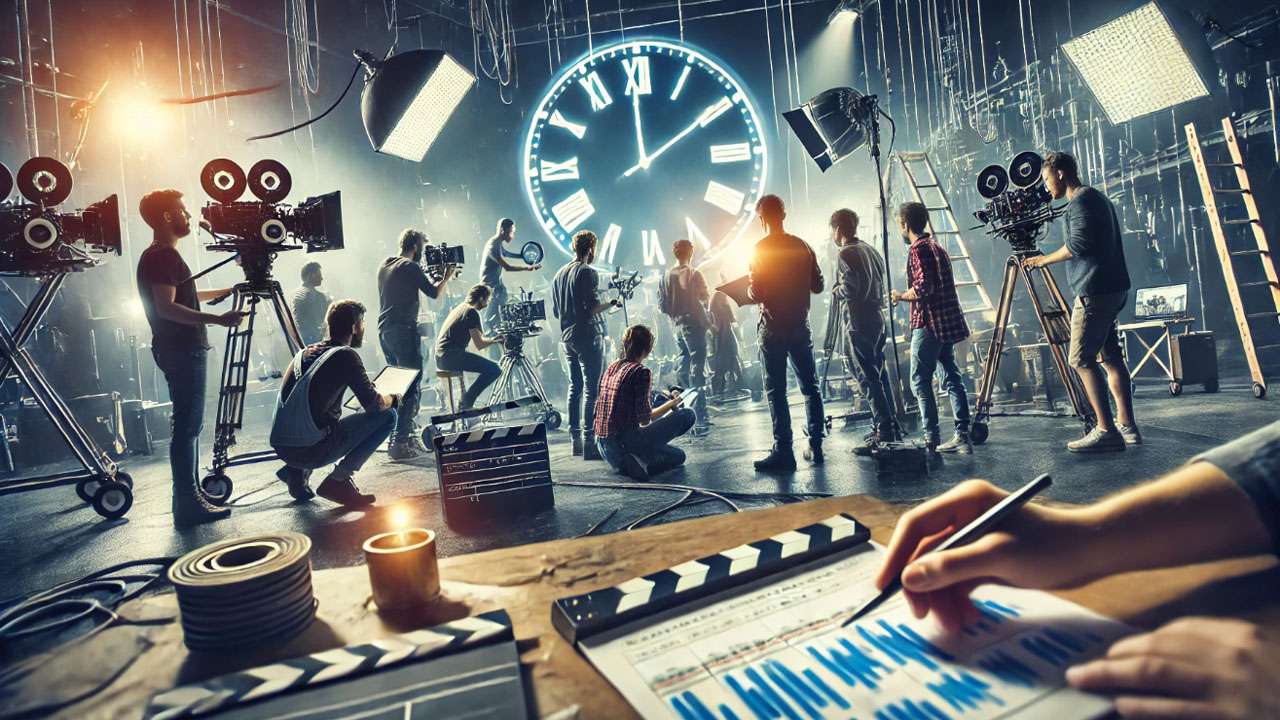
Tight Production Schedules ⏰
Each film had to be produced within a specific timeframe, with filming often overlapping between productions. This meant the team had to work quickly without sacrificing quality.
- The Challenge: With multiple films being shot in quick succession, there was little room for delays. Filming locations had to be prepped, actors needed to be available, and special effects had to be meticulously planned—all while staying on schedule.
- The Solution: The filmmakers used efficient project management techniques, meticulously planning each phase of production. From the actors’ schedules to the construction of sets, everything was done with precision to avoid delays. In some cases, shooting had to continue while sets were being built for upcoming scenes.
- Why It Worked: This efficient planning and careful coordination allowed the series to stay on track, despite the sheer scale of the production. It ensured that the films were completed on time and with the needed visual effects.
Maximizing the Budget 💸
Despite the enormous success of the series, every penny had to be carefully spent to meet the high production standards expected by fans. Stretching the budget was crucial to avoid overspending, especially on special effects and large-scale sequences.
- The Challenge: With a high-budget franchise like Harry Potter, the pressure was on to deliver impressive visuals while keeping costs under control. Special effects, sets, and location shoots can be expensive, and there was the constant challenge of making every dollar count.
- The Solution: One strategy was to reuse sets and costumes across different films, which helped keep costs down. For example, the Great Hall and other major Hogwarts locations were used across multiple films. Similarly, digital effects allowed for the reuse of certain CGI elements (like creatures or magical effects), cutting down the cost of creating new visual assets.
- Why It Worked: This careful resource management allowed the filmmakers to allocate funds where they were needed most, ensuring the highest-impact sequences were given the necessary budget for quality production.
Prioritizing Key Sequences 🌟
In a film series with so many magical moments, the filmmakers had to be strategic about which sequences would take center stage. Some of the most expensive and time-consuming scenes involved complex special effects, while others needed careful planning to ensure a high level of detail without exceeding the budget.
- The Challenge: Some sequences, like the epic battles or the Quidditch scenes, required a significant portion of the budget due to their complexity. Balancing these high-cost moments with less expensive scenes required careful prioritization.
- The Solution: By strategically allocating funds to the most visually impactful sequences, the team ensured the key moments were visually stunning, while simpler scenes relied on practical effects or less expensive techniques.
- Why It Worked: This approach meant that each film’s biggest moments were unforgettable, and smaller scenes could still deliver the story effectively without excessive spending. The result was a franchise where every dollar spent contributed to making the magical world as immersive as possible.
Efficient Use of Visual Effects 🎥
Visual effects were a crucial element of the Harry Potter films, but they could quickly become a drain on both time and budget. How did the filmmakers manage to use VFX effectively without overspending?
- The Challenge: Special effects were required to bring magical elements to life, but some of these effects, especially for complex scenes like the Triwizard Tournament or the Battle of Hogwarts, took time and money to perfect.
- The Solution: By using a combination of practical effects and CGI, the filmmakers saved both time and money. For example, creatures like Hagrid’s giant pet dog, Fang, were created with a mix of animatronics and CGI, reducing the need for expensive digital creatures in every scene.
- Why It Worked: This hybrid approach meant that VFX were used strategically, ensuring they had the biggest impact without overburdening the production budget. The balance of practical and digital effects allowed the films to maintain a sense of realism while still delivering visually stunning sequences.
Why Time and Budget Matter
The way the Harry Potter films handled time and budget constraints played a crucial role in their success. By effectively managing schedules, prioritizing key moments, and utilizing resources wisely, the filmmakers were able to deliver a high-quality, visually stunning series without breaking the bank. 💰
Understanding the behind-the-scenes challenges of time and budgeting not only helps us appreciate the scale of the production but also shows how strategic decision-making can make or break a blockbuster film. This efficiency ensured that the magic of the Wizarding World remained within reach, no matter how grand the vision. 🌟
5: The Role of Actors and Their Transformations
One of the most captivating aspects of the Harry Potter series is how its actors grew alongside their characters. But filming these iconic roles wasn’t without its challenges, especially as the cast matured over the years. From child stars stepping into complex roles to intense physical and emotional transformations, the actors faced unique hurdles in bringing the magic to life. Here’s a look at how they managed their incredible journey. 🎬✨
Growing Up with the Characters 🌱
When the series began, the young actors were mere children. As the films progressed, they had to navigate the challenges of growing up in the spotlight while staying true to their characters.
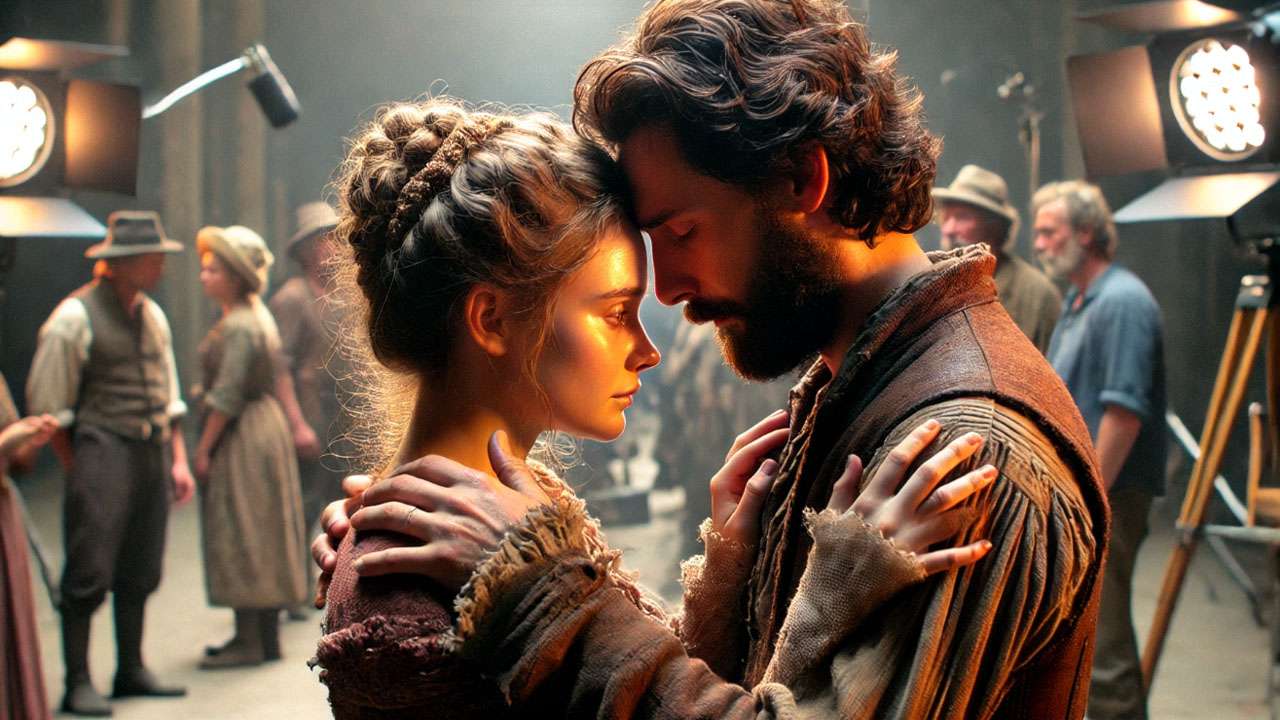
- The Challenge: The main cast—Daniel Radcliffe (Harry), Emma Watson (Hermione), and Rupert Grint (Ron)—had to mature physically and emotionally while keeping the essence of their characters intact. As their real-life ages advanced, so did their on-screen personas, and this evolution had to feel natural.
- The Solution: The directors worked closely with the actors to ensure their growth matched the storyline. For example, Hermione’s increasing maturity and leadership role in the films aligned with Emma Watson’s real-life growth. The actors received coaching to handle more complex emotional scenes as they got older.
- Why It Worked: This real-life transformation helped the audience connect with the characters’ journeys. Watching the trio grow from young students into battle-hardened wizards was both relatable and heartwarming.
Intense Training and Physical Preparation 💪
The Harry Potter films are filled with action-packed sequences—flying on broomsticks, performing spells, and even running from danger. These scenes required serious physical preparation from the actors.
- The Challenge: The actors had to perform stunts, fight scenes, and even complex choreography. This meant learning how to react to magical elements that weren’t physically there, while also staying safe on set during action-packed sequences.
- The Solution: The cast underwent extensive training for action scenes. For instance, Daniel Radcliffe spent hours learning how to safely ride broomsticks and perform Quidditch stunts. Emma Watson and Rupert Grint also trained for their fight sequences, with stunt coordinators guiding them through intricate moves.
- Why It Worked: Their dedication to training made the action scenes look fluid and authentic. The actors’ commitment to performing their own stunts (when possible) added a layer of realism to the fantastical world they inhabited.
Emotionally Challenging Roles 💔
The Harry Potter films aren’t just about magic—they’re about friendships, sacrifices, and personal growth. These emotional moments required the actors to dig deep into their craft.
- The Challenge: Filming scenes of loss, grief, and heartache—such as the death of beloved characters like Sirius Black or Dumbledore—was emotionally taxing for the actors. They had to remain emotionally raw while maintaining professionalism in front of the camera.
- The Solution: The cast worked closely with the director and their fellow actors to bring authenticity to these difficult scenes. Emma Watson, for example, often spoke about how challenging it was to portray Hermione’s emotions during Ron’s absence in The Half-Blood Prince. The cast supported each other through these intense moments.
- Why It Worked: These emotional depths are what made the characters and their relationships feel real. The actors’ ability to convey genuine emotion made the audience feel connected to the wizarding world, no matter how fantastical the setting.
The Transformation into Iconic Characters 🎭
The actors had to undergo physical transformations to truly become their characters. From costume fittings to hairstyle changes, these shifts were vital to their roles.
- The Challenge: From Harry’s famous glasses to Hermione’s bushy hair and Ron’s freckles, the physical look of each character was integral to their identity. The actors had to embody these characteristics while still making them their own.
- The Solution: The costume designers and makeup artists worked closely with the actors to ensure their looks were both iconic and functional. The actors were involved in these transformations, helping to shape their characters’ visual identities on-screen.
- Why It Worked: The physical transformations—like Daniel Radcliffe’s signature glasses and Emma Watson’s wand-waving—became ingrained in the characters’ identities. These visual elements helped the audience connect with the characters instantly, further solidifying their place in pop culture.
Why These Transformations Matter
The actors’ journeys through the Harry Potter films are a testament to their talent and dedication. Their ability to evolve alongside their characters—both physically and emotionally—was key to the films’ success. 🌟
As fans, we saw these young stars grow up in front of our eyes, and we felt their triumphs and challenges as if they were our own. Their transformations were crucial not just for character development but for building the emotional depth that made the series so compelling. Whether through intense training, emotional growth, or costume changes, the actors’ dedication brought a sense of authenticity and magic to the screen. 🎥✨
6: Filming in Unique Locations
One of the standout features of the Harry Potter films is the stunning, real-world locations that brought the magical world to life. From ancient castles to picturesque villages, these unique filming locations helped create a sense of authenticity and immersion. But filming in these beautiful places wasn’t without its challenges. Let’s explore how the team overcame the logistical hurdles of shooting in some of the most iconic spots in the wizarding world. 🌍✨
The Challenge of Filming at Historic Locations 🏰
Many of the key locations in the Harry Potter films, like Hogwarts and Diagon Alley, were inspired by real-world places. Shooting at these historic sites added authenticity but also brought unique challenges.
- The Challenge: Filming at ancient castles, churches, and public spaces meant navigating strict permissions, limited access, and, sometimes, inconvenient weather. Locations like Alnwick Castle (used for exterior shots of Hogwarts) required careful planning to avoid disrupting visitors or historical preservation efforts.
- The Solution: The production team worked closely with location managers, historical sites, and local authorities to ensure they followed guidelines while still getting the shots needed. In some cases, they filmed during off-peak hours or seasons to avoid crowds.
- Why It Worked: By filming at these stunning, real-world locations, the filmmakers brought a sense of realism to the magical world of Harry Potter. The authenticity of places like the Hogwarts Express’s Scottish route (filmed on the West Highland Line) added to the film’s atmosphere, making it feel like magic was just around the corner.
Weather Woes: Dealing with the Elements 🌦️
Filming on location meant dealing with unpredictable weather—especially in places like Scotland, where many of the Hogwarts exteriors were shot.
- The Challenge: Filming outdoors meant battling rain, snow, and cold temperatures. The production team often had to adjust on the fly to changing conditions.
- The Solution: The crew was well-prepared with backup plans. For instance, if the weather didn’t cooperate for a key outdoor scene, the team would use controlled indoor sets to film the dialogue and action, then shoot outdoor shots when conditions improved. They also made use of CGI to enhance weather effects in post-production.
- Why It Worked: Despite the weather challenges, filming in these natural locations gave the films an unparalleled level of realism. The sweeping landscapes, misty hills, and snowy backgrounds contributed to the magical atmosphere, even when the crew had to adapt to the elements.
Building Magical Worlds in Real Places 🏙️
While the team made excellent use of real-world locations, they also had to transform these spaces into the magical world of Harry Potter. This required combining set design, digital effects, and careful camera angles.
- The Challenge: Locations like Diagon Alley or the Forbidden Forest weren’t places you could simply visit. Filmmakers had to work with the existing landscapes and modify them to fit the wizarding world.
- The Solution: The production team often used set dressing, CGI, and clever camera work to create magical environments. For example, filming Diagon Alley involved combining real-world streets with detailed set pieces and CGI to create the bustling, otherworldly atmosphere of the wizarding shopping district.
- Why It Worked: By blending real locations with digital enhancements, the filmmakers were able to create the feeling of magic without relying solely on CGI. This kept the world grounded and believable, even while the characters were surrounded by fantastical elements.
Accessing Remote and Iconic Locations 🌲
Some of the more memorable scenes, like the flight over the Scottish Highlands or the trek through the Forbidden Forest, were filmed in remote and picturesque locations that required significant effort to access.
- The Challenge: Reaching some of these remote locations—whether it was the foggy moors or the Scottish Highlands—was no easy task. Sometimes, the crew had to transport heavy equipment through difficult terrain and harsh conditions.
- The Solution: The team used specialized vehicles and equipment to transport crew and gear to these remote sites. In some cases, they even filmed scenes at night to capture the magical, eerie atmosphere of these locations without interference from tourists or locals.
- Why It Worked: These efforts were essential to capturing the vast, magical landscapes that became iconic in the films. The real-world locations, like the dense forests and rugged mountains, perfectly mirrored the magical adventure Harry and his friends were on.
Why Location Filming Matters
The real-world locations used in the Harry Potter films didn’t just serve as a backdrop—they played a pivotal role in creating the immersive experience that fans still love today. 🏞️
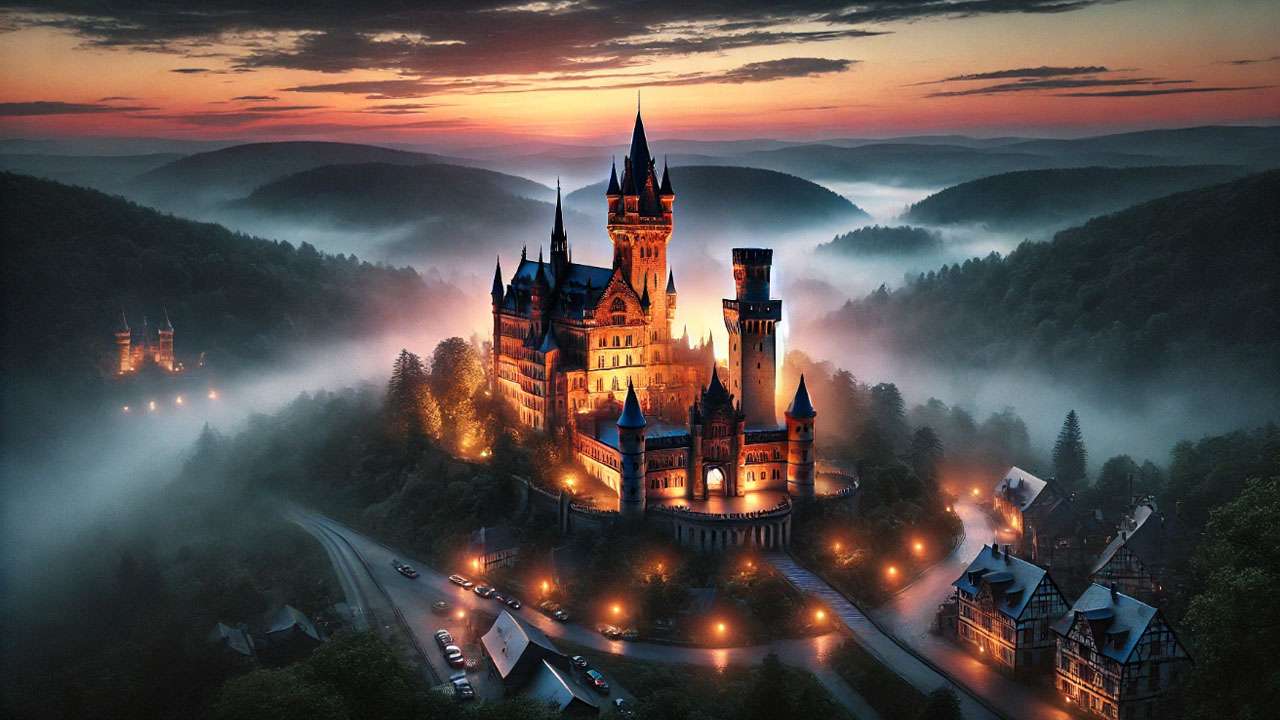
By overcoming the challenges of filming in historic, remote, and often unpredictable locations, the filmmakers brought J.K. Rowling’s magical world to life in a way that felt both familiar and fantastical. The use of these unique locations not only made the films visually stunning but also allowed the audience to feel as though they were walking alongside Harry Potter in his journey through the wizarding world. ✨
7: The Soundtrack and Sound Effects
One of the unsung heroes of the Harry Potter films is the soundtrack and sound design. The magical world wouldn’t feel quite as magical without the iconic music or immersive sound effects that transport viewers into the wizarding world. But creating these sounds came with its own set of challenges. Let’s dive into how the sound team created the auditory magic that made the films unforgettable. 🎶✨
The Power of Music: John Williams’ Iconic Score 🎼
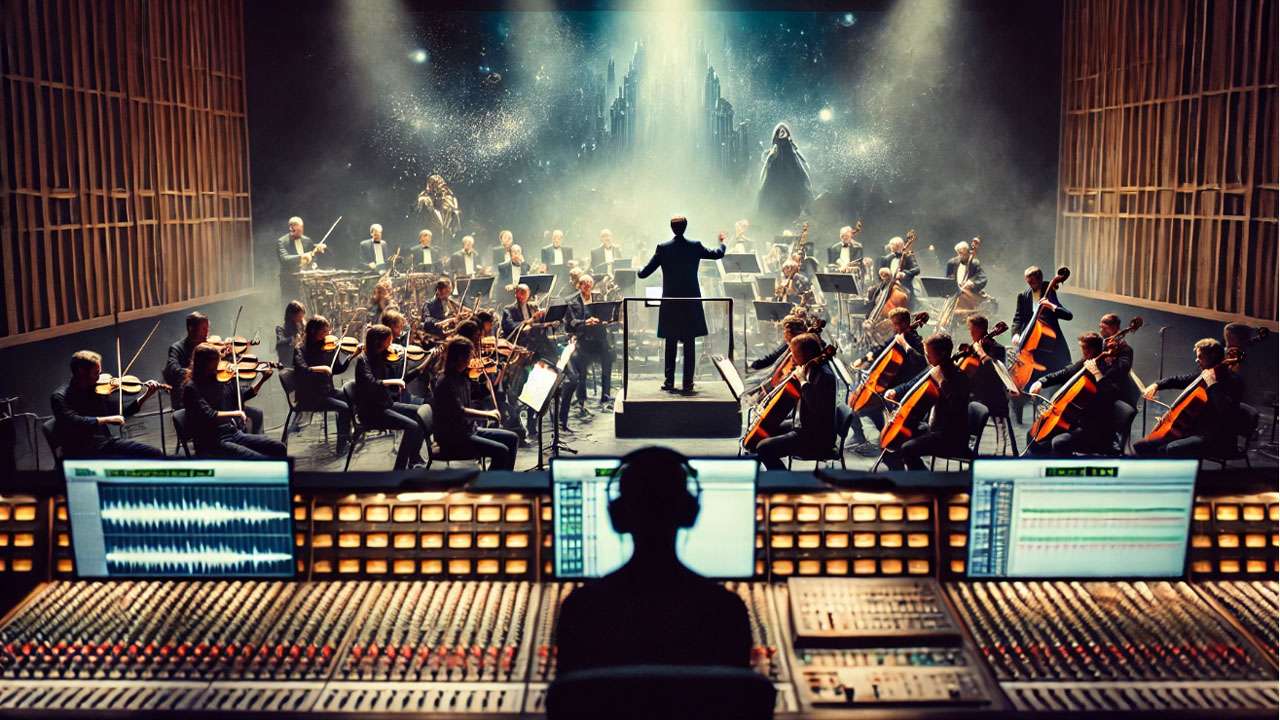
The Harry Potter films are known for their unforgettable music, especially the iconic “Hedwig’s Theme” composed by John Williams. But creating a soundtrack that captured the magic of the series while still feeling fresh across all eight films was no small feat.
- The Challenge: The music needed to reflect the evolving tone of the series—starting with the whimsical and magical atmosphere of The Philosopher’s Stone and gradually shifting to the darker, more intense themes in later films. It had to capture both the childlike wonder and the growing stakes of the wizarding world.
- The Solution: John Williams, along with other composers like Alexandre Desplat, worked to craft themes that were emotionally resonant and thematically consistent. For example, Hedwig’s Theme became a central motif throughout the series, representing the magic and adventure at the heart of the films.
- Why It Worked: The music became an integral part of the storytelling. It highlighted key moments, enhanced the emotional impact of scenes, and helped create a lasting connection between the audience and the world of Harry Potter. Whether it’s the triumphant “Harry’s Wondrous World” or the haunting “Double Trouble,” the soundtrack enriched the viewer’s experience.
Sound Effects: Making Magic Real 🔮
Magic is all about sound, from the swish of a wand to the boom of a spell. Filming Harry Potter involved creating thousands of unique sound effects to make the magic come alive, but how do you create sounds for something that doesn’t exist in the real world?
- The Challenge: Magic isn’t real, so the sound designers had to create unique sounds for spells, creatures, and magical moments. How do you capture the sound of a “Patronus” or the whoosh of a broomstick in flight?
- The Solution: Sound designers used a mix of real-world sounds and creative manipulation to craft magical effects. For example, the sound of a broomstick flying was created using a combination of the sound of a passing car and wind effects, while the “Expelliarmus” spell had an electrifying, high-pitched sound. Every detail was thought through to make sure the sounds felt distinct and magical.
- Why It Worked: The immersive sounds helped the audience feel like they were part of the action. From the crackle of a spell to the roar of the Basilisk, the sound effects made the magical world feel tactile and real, heightening the excitement and magic of each scene.
Creating Magical Creature Sounds 🦄
The magical creatures in Harry Potter—from Buckbeak the Hippogriff to the terrifying Basilisk—needed their own unique sounds to make them feel alive. But how do you create a sound for a creature that has never existed?
- The Challenge: Making sure the sounds of magical creatures felt believable yet fantastical was a significant task. The challenge was to evoke the right emotions in the audience, whether it was the awe of a majestic creature or the terror of an enormous monster.
- The Solution: For many creatures, sound designers combined animal noises with electronic effects to create something unique. Buckbeak’s sounds, for example, were a blend of horse and bird noises, altered to make the creature feel otherworldly yet grounded in reality.
- Why It Worked: The creatures felt alive because their sounds were distinctive and consistent. Whether it was the growl of the giant Acromantula or the eerie hiss of the Basilisk, these sounds helped shape how we perceived the creatures, making them more memorable and integral to the film’s world.
The Role of Silence in Building Tension ⏳
While sound and music played a huge role in bringing the magic to life, silence was just as important in building tension and creating atmosphere. Think of the quiet moments before a big revelation or the eerie silence in the Forbidden Forest.
- The Challenge: Balancing moments of intense sound with quiet, suspenseful scenes was key to maintaining the right tone throughout the films. How do you create tension with no sound at all?
- The Solution: Strategic use of silence or minimal sound helped build anticipation for major events or shocks. In quieter, more tense moments, the absence of sound allowed the audience to focus on the visuals and heightened the suspense. For example, in scenes involving the Dark Lord or the Hall of Prophecies, silence amplified the unease and fear.
- Why It Worked: Silence gave the audience a chance to breathe, while also heightening the emotional stakes. It provided contrast to the explosive action and magical moments, creating a more dynamic auditory experience.
Why Sound Matters in Filmmaking
The soundtrack and sound effects in Harry Potter weren’t just background noise—they were integral to the storytelling. 🎧
By crafting a world of magical sounds—from the iconic score to the fantastical creature noises—the filmmakers created a fully immersive experience. The right sound made the magical world feel tangible, while silence added emotional weight and tension. It’s a perfect example of how sound can elevate a film from good to unforgettable. ✨
8: The Magic of Post-Production
Once the cameras stop rolling, the real magic begins. In the Harry Potter films, post-production played a critical role in transforming raw footage into the polished, visually stunning final product. With hundreds of special effects, intricate editing, and complex sound work, post-production was where the magical world truly came to life. But how did they manage such a massive task? Let’s dive into the key aspects of post-production that made the films unforgettable. 🎬✨
Bringing CGI to Life 🖥️
One of the most significant aspects of Harry Potter was the seamless integration of CGI (Computer-Generated Imagery). Magic, creatures, and stunning landscapes were all brought to life in post-production, and the team had to ensure that CGI worked flawlessly with the live-action footage.
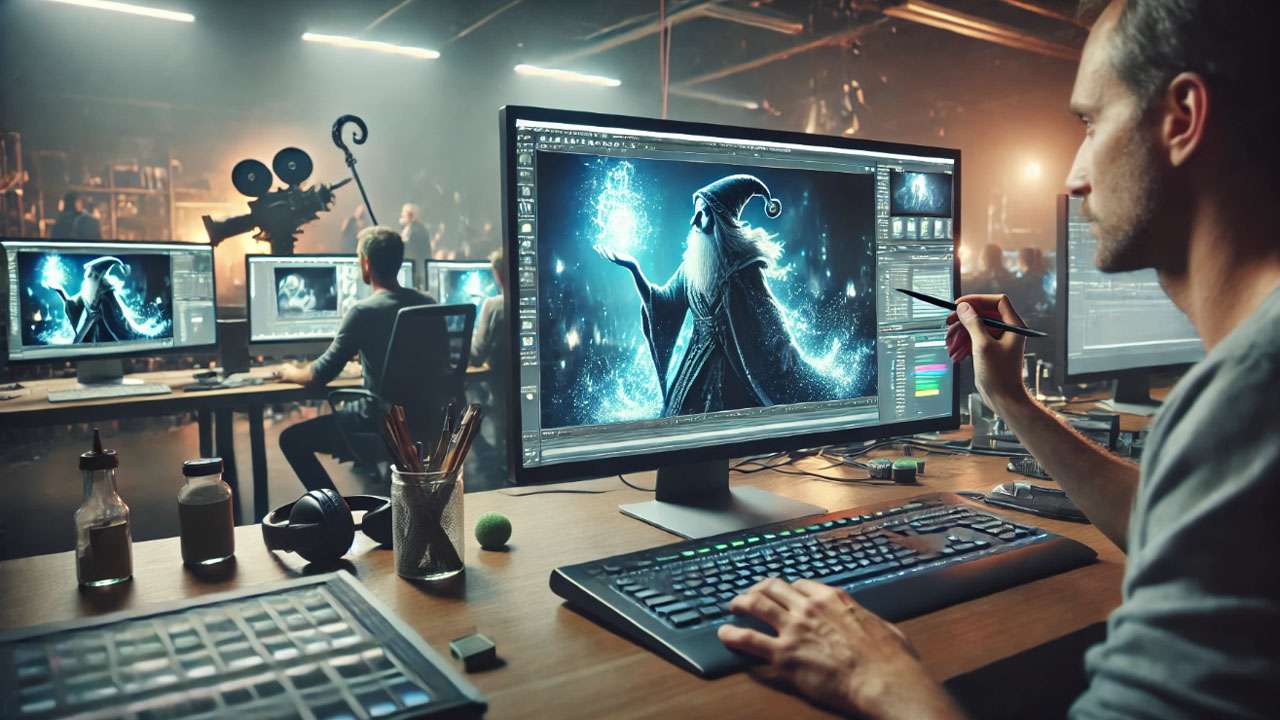
- The Challenge: Creating creatures like Buckbeak, the Basilisk, and magical effects like flying broomsticks required advanced CGI, which had to blend seamlessly with the real-world shots. The challenge was making sure the visual effects didn’t feel out of place and distracted from the story.
- The Solution: The visual effects team worked meticulously to ensure that CGI elements were perfectly synchronized with the actors’ movements. For instance, the team used motion capture technology for certain creatures to make their movements realistic. They also made sure that CGI backgrounds like the Quidditch pitch or the Forbidden Forest matched the live-action shots.
- Why It Worked: The high-quality CGI, combined with practical effects, made the magical elements feel real and grounded. The smooth integration of visual effects allowed audiences to immerse themselves in the world of Harry Potter, making magic seem possible.
Editing for Pacing and Flow ✂️
Post-production editing is crucial for ensuring that a film flows smoothly and keeps the audience engaged from start to finish. For a saga as complex as Harry Potter, editing was essential to maintain the right pacing, especially with long running times and many subplots.
- The Challenge: The films were packed with intricate details, multiple storylines, and a large cast of characters. Editing had to balance these elements while keeping the plot moving forward without losing focus on key moments.
- The Solution: Editors worked to ensure that the narrative flowed smoothly and that the pacing reflected the tone of each film. Action scenes were tightened to keep them thrilling, while quieter, emotional moments were given space to breathe. Additionally, transitions between scenes were carefully planned to maintain consistency across the films.
- Why It Worked: Well-edited sequences made the films engaging without overwhelming the audience. The pacing allowed for both thrilling action and emotional depth, ensuring that viewers stayed hooked through every twist and turn.
The Art of Color Grading 🎨
Color grading is a subtle yet vital part of post-production that can significantly impact the tone of a film. For Harry Potter, color grading helped distinguish the different emotional atmospheres of each film while also creating a consistent visual style across the series.
- The Challenge: Each Harry Potter film had its own tone—lighthearted in the early films, darker in the later ones. The challenge was making sure the color palette reflected these changes, while still maintaining a cohesive look across the entire series.
- The Solution: The color grading team adjusted the hues and contrasts to match the mood of each scene. For example, early films had brighter, warmer tones, while darker films like The Deathly Hallows used cooler, more muted colors to reflect the growing danger and seriousness of the story.
- Why It Worked: The color grading subtly reinforced the emotional tone of each film. It helped visually guide the audience through the evolving world of Harry Potter, supporting the storyline and characters in a way that was both beautiful and effective.
Sound Design and Final Mixing 🎧
As we discussed earlier, sound is crucial in bringing the magical world to life. In post-production, sound design and mixing took the raw audio from the set and combined it with magical effects, dialogue, and music to create a fully immersive experience.
- The Challenge: Balancing the dialogue with complex sound effects and music while ensuring that all elements were clear and didn’t overwhelm each other was a key task.
- The Solution: The sound team worked to enhance key moments, like the sound of spells, magical creatures, and action sequences, without detracting from the performances of the actors. They also mixed the music to ensure it flowed naturally with the scenes, from quiet moments to grand, climactic events.
- Why It Worked: This meticulous sound design made the magical world feel alive and tangible. The seamless integration of sound effects and music added emotional depth to the film and amplified the impact of every magical moment.
Why Post-Production is Crucial
Post-production is where the Harry Potter films truly transformed from raw footage into the magical spectacles we know and love today. By carefully integrating CGI, sound, color grading, and editing, the filmmakers were able to enhance the storytelling and immerse the audience in the wizarding world. 🪄
The magic of post-production wasn’t just about adding effects—it was about ensuring every element, from sound to visuals, worked together to elevate the film. Without the incredible work done in post-production, Harry Potter wouldn’t have had the same visual impact, emotional resonance, or immersive experience that made it one of the most beloved franchises in film history. ✨
9: Lessons Learned and Innovations from Filming Harry Potter
The Harry Potter films are not just a series of magical adventures—they are a masterclass in filmmaking. Throughout the production, the team faced numerous challenges that ultimately led to groundbreaking innovations and valuable lessons. From pioneering visual effects to new approaches to storytelling, the legacy of Harry Potter extends far beyond its on-screen magic. Let’s explore the key lessons and innovations that emerged from filming the series. ✨🎬
Innovation in Visual Effects: Pushing the Limits of CGI 🖥️
One of the biggest lessons learned from the Harry Potter films is the power of combining practical effects with cutting-edge CGI. The team discovered how to create seamless and believable magical moments by blending the real with the fantastical.
- The Lesson: CGI can enhance realism, but it’s the combination with practical effects that truly brings a scene to life.
- The Innovation: Harry Potter pushed the boundaries of CGI, especially in creating magical creatures and spells. The use of motion capture and high-quality digital effects helped bring iconic creatures like Buckbeak and the Basilisk to life in ways never seen before.
- Why It Matters: Filmmakers learned that visual effects should serve the story, not overshadow it. This balance between practical and digital elements set new standards in the industry for integrating CGI into live-action filmmaking.
Telling a Long-Form Story: The Power of Consistency 📚
The Harry Potter series is unique in that it spans multiple films with a single, ongoing story. This long-form storytelling presented challenges in maintaining character consistency, visual continuity, and emotional arcs.
- The Lesson: Consistency is key when telling a story over multiple films. Ensuring continuity in both narrative and character development is crucial for keeping the audience engaged.
- The Innovation: The filmmakers used meticulous planning to keep the tone, visual style, and character arcs consistent throughout the series. They also adapted the script to ensure each movie stood on its own while still contributing to the larger narrative.
- Why It Matters: This approach showed how long-form storytelling could be successfully executed in a franchise, providing valuable lessons for future film series, like The Hunger Games or The Lord of the Rings.
The Role of Child Actors: Growing with the Story 🌱
Filming over a decade meant that the child actors playing Harry, Hermione, and Ron grew up alongside their characters. This presented challenges in terms of acting, emotional depth, and adapting to the demands of a growing audience.
- The Lesson: Child actors require not only training but emotional support as they navigate intense roles over many years.
- The Innovation: The filmmakers implemented a close-knit support system for the young cast, allowing them to grow emotionally and professionally with the series. Directors worked closely with the actors to ensure their performances matured naturally with the storyline.
- Why It Matters: This experience reshaped how filmmakers approach casting in long-running franchises, highlighting the importance of nurturing young talent both on and off the screen.
Innovative Filming Locations: Bringing the Magic to Life 🌍
Filming in real-world locations added an authentic layer to the Harry Potter films, but it also presented logistical challenges. Filming in remote, historical, and iconic locations required careful planning and adaptation.
- The Lesson: Filming in unique, real-world locations can enhance the storytelling, but it requires meticulous preparation and flexibility.
- The Innovation: The production team pioneered new methods for filming in challenging environments. They used cutting-edge camera rigs and techniques to capture breathtaking landscapes like the Scottish Highlands and the Forbidden Forest, ensuring that the natural world seamlessly blended with the magical world of Hogwarts.
- Why It Matters: These innovations in location filming influenced future productions that require outdoor and historical settings, showing how real-world locations can be used to enhance a film’s atmosphere.
The Importance of Sound: Crafting a Magical Audio Experience 🎧
Sound design and music played a pivotal role in bringing the wizarding world to life. The success of the Harry Potter soundtrack, composed by John Williams, and the immersive sound effects, proved that audio is just as important as the visuals in creating an unforgettable cinematic experience.
- The Lesson: Sound and music are not just accessories—they are integral to the storytelling experience.
- The Innovation: The team pioneered new techniques in sound design, from creating magical sounds for spells to composing scores that captured the emotional depth of the story. The innovative use of music and sound heightened the emotional impact of the films and helped immerse the audience in the world of magic.
- Why It Matters: The Harry Potter films demonstrated that sound is a powerful tool in filmmaking, and it influenced how sound design and music are integrated into future blockbuster films.
Why These Lessons and Innovations Matter
The Harry Potter films were a groundbreaking achievement in filmmaking, and the lessons learned during their production have shaped the industry. From blending practical and digital effects to perfecting long-form storytelling, the innovations that emerged from these films continue to influence modern cinema. 🌟
These lessons provide invaluable insights for filmmakers today—showing how creativity, collaboration, and attention to detail can transform a film into a cultural phenomenon. Whether it’s through technological advancements, acting techniques, or storytelling strategies, Harry Potter set a new standard in the world of filmmaking, leaving behind a lasting legacy for future generations of creators. 🎬
Filming the Harry Potter series was an extraordinary journey filled with challenges, innovation, and unforgettable moments. From creating seamless magical effects to navigating the complexities of filming in iconic locations, the team behind these films pushed the boundaries of what was possible in cinema. The lessons learned—from blending practical and digital effects to the importance of sound design—have left a lasting impact on the film industry. 🌟
These challenges weren’t just obstacles; they were opportunities for growth, creativity, and the birth of groundbreaking techniques that continue to shape modern filmmaking. Every magical spell, every creature, and every dramatic moment came to life because of the dedication and ingenuity of those behind the scenes. 🎬
Frequently Asked Questions (FAQs)
1. What were the biggest challenges in filming the Harry Potter movies?
The biggest challenges in filming the Harry Potter movies included creating realistic magical effects, balancing CGI with practical effects, and adapting J.K. Rowling’s books while maintaining consistency across eight films. Additionally, filming in remote locations, managing tight schedules, and working with a growing cast of child actors posed significant hurdles. These challenges required creativity, resourcefulness, and cutting-edge technology.
2. How did they make the flying broomstick scenes look realistic?
The flying broomstick scenes were filmed using a combination of wire rigs, green screens, and CGI. The actors were suspended on wires, and background scenes were digitally added in post-production. This blend of practical and digital effects allowed the flying sequences to look both dynamic and believable.
3. What kind of special effects were used in the Harry Potter films?
The Harry Potter films used a mix of practical effects (like puppets and models) and CGI for creating magical creatures, spells, and fantastical environments. Iconic effects, such as the flying broomsticks or the invisibility cloak, combined both techniques to create a seamless, immersive experience for the audience.
4. How did the cast handle growing up on screen during the filming of Harry Potter?
The main cast, including Daniel Radcliffe, Emma Watson, and Rupert Grint, grew up on-screen over the decade-long filming process. Filmmakers and directors worked closely with them to ensure their character arcs matched their real-life maturity, while supporting the actors emotionally and professionally to deal with the pressures of growing up in the spotlight.
5. How did the Harry Potter films manage time and budget constraints?
The Harry Potter films were made on tight schedules and large budgets, requiring careful planning to ensure everything stayed on track. Filmmakers used cost-saving strategies like reusing sets and costumes, and carefully prioritized key sequences. Efficient use of resources and pre-planned shooting schedules helped keep production on time and within budget.
6. How were the magical creatures like Buckbeak and the Basilisk created?
Magical creatures like Buckbeak and the Basilisk were created using a combination of animatronics, practical models, and CGI. For instance, Buckbeak was a mechanical model, while CGI enhanced its movement and interactions. This hybrid approach helped make the creatures feel tangible and believable on screen.
7. What role did sound and music play in the Harry Potter films?
Sound and music were essential in creating the magical atmosphere of Harry Potter. John Williams’ iconic score, alongside unique sound effects for spells, creatures, and magical environments, helped immerse viewers in the wizarding world. The strategic use of silence and sound design added emotional depth, making key moments more impactful.
8. How did post-production contribute to the magic of Harry Potter?
Post-production was crucial for bringing the magical world to life, particularly through visual effects, color grading, and sound design. CGI was used to enhance magical elements, while editing ensured smooth pacing. The meticulous work in post-production helped create the seamless blend of magic and realism that made the Harry Potter films so captivating.
